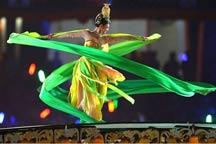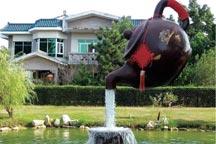A number of books have been published recently which reexamine the fascinating life and work of groundbreaking architectural historian and 'Lady of Letters', Lin Huiyin.
 |
| Lin Huiyin |
The favorite daughter of Mr. Lin Changmin, a high-rank governor in the Beiyang Government, 16-year-old Lin Huiyin traveled with her father around Europe and the United States in the 1920s.
In 1928, Lin got married in Canada to Mr. Liang Sicheng, son of China's famous politician and scholar, Liang Qichao. The couple had met while studying at Pennsylvania University in America.
On returning to China, Lin Huiyin started teaching architecture at Northeast University and then moved to Beijing's Qinghua University. She co-wrote the famous "Development Stages of Chinese Architecture" with her husband Liang Sicheng and another architect. She also contributed to the design for China's National Emblem and the Hero of the People's Monument in Beijing's Tiananmen Square.
Accompanying her husband to thousands of ancient Chinese architectural sites, most of which were in remote areas, she worked tirelessly to research China's architectural history. She and her husband lobbied hard to protect many of the old buildings in Beijing at a time when the municipal government was leveling many parts of the city for new construction.
Lin Huiyin's interests were very extensive and in addition to her work on architecture, she also wrote poems, essays, short stories and plays as well as translating works from English. She was well known in literary circles as hostess of one of the country's most famous literary salons in her home in Beijing's Zhongbu Hutong.
 |
|
Lin Huiyin |
One of the more sensational parts of Lin Huiyin's life was her affair with romantic poet Xu Zhimo and she remains best known nowadays as an extremely beautiful female poet of the 1930s. As a symbol of independent women of the time, Lin Huiyin and her western education and fluent English gave her a broader outlook on life than most women of the time. Despite suffering from phthisis towards the end of her life, she never abandoned her work.
One famous writer recalled once visited to the ailing Lin, "She looked anything but a sick person and was wearing a horse riding dress. She still talked so quickly that you couldn't get a word in. She never talked indirectly, or vaguely, but always straight to the point. Her criticisms never offended others and I was always amazed by her extraordinary understanding of the arts."




















